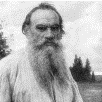Modern Languages and Literatures, Department of
Date of this Version
September 1993
Abstract
Vladimir Galaktionovich Korolenko's (1853-1921) short stories unravel spatially rather than temporally--that is, juxtaposition of episodes in a moment of time takes precedence over sequential presentation. Past and present are often "fused in one comprehensive view," giving them a spatial form. Korolenko's narrator, proceeding along a road, unexpectedly meets interesting individuals and soon witnesses their actions and/or shares with them events from their past that have shaped their present world view through a recollection. It is as though the very volatility of the protagonists' present situation helps disclose a moment of decision from their past. This distinct present is portrayed through landscape conducive to character revelations.
Korolenko is not alone in presenting a conflict or an issue in his characters' minds and uncovering them through a description of the surroundings. Turgenev before him, and Chekhov soon after him, distinguished themselves with their remarkable descriptions of nature to reveal characters. But the difference in their use of landscape is what is crucial to this discussion. A general comparison of their techniques brings out the uniqueness in Korolenko's portrayal of nature which gives his fiction a spatial form-defined by Joseph Frank in his "Spatial Form in Modern Literature"-with regard to his character portrayal.


Comments
Published in Canadian Slavonic Papers/Revue canadienne des slavistes, Vol. XXXV, Nos. 3-4, (September-December 1993), pp. 249-260. Copyright 1993 by Canadian Slavonic Papers. Used by permission. http://www.ualberta.ca/~csp/